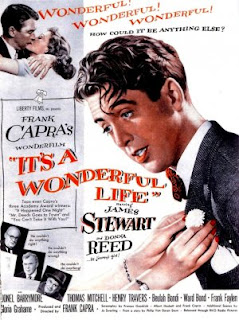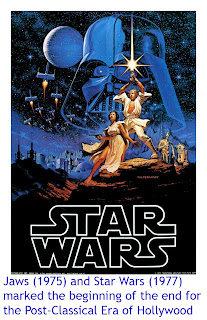Since the 1920s the US film industry has grossed a higher profit each year than that of any other country. We have been set the assignment to produce a film poster (Key Art) inspired by an era of Hollywood Cinema history. There are four different periods of Hollywood we have the option to choose from.
The Silent Film Era,
Before the first world war, movies were made in a variety of American cities. However, these film-makers began to journey toward Southern California, here the industry developed and became Hollywood. This was because of the mild climate, cheap land and, fairly, reliable sunshine, which meant that they could film outdoors all year round. The area also had variation in it's scenery, allowing a change in set. Movie-Makers from Elso came to Southern California. Hollywood hit it's peak during the 1940s, releasing approximately 400 movies a year. With about 90 million Americans a week going to the cinema to see them.

However, films began to be released with synchronised voices, these "Talkies" became far more popular than the silent films and left many silent film actors out of work. This was because often, they could not speak particularly good English, or had strong accents as often foreign actors were used. Similarly, actors who struggled to learn lines lost jobs in much the same way. This theme was presented in "The Artist" as a French actor in a silent film refused to move with the times on to Talkies, in fear of his accent being discriminated.
"The Golden Age": Classical Hollywood Cinema,

From 1927 (the end of the silent film era) to the early 1920s, Hollywood released thousands of movies. The genres which were most popular were western, slapstick comedy, animated cartoon and biopic movies. Creative teams often worked on films made by the same studio. For example, Cedric Gibbons and Herbert Stothart worked solely for MGM films. MGM films had a claim that they owned "More stars than there are in heaven", this included "The King of Hollywood" Clark Gable and Judy Garland. This meant that studios could market their stars which lead to higher sales of the film. This can be seen in the poster for "It's a Wonderful Life." which features James Stewart taking up almost the entire poster and his name is predominantly larger than the other titles. This became known as "The Studio System." In the late 1940s, the Studio System hit a downfall. This was for many reasons. Firstly, Studios owned their own cinemas, showing there own films, meaning that smaller, poorer studios could not get into the limelight.
Post-classical Hollywood

Often known as the "American New Wave", refers to the time from roughly the late-1960s (Bonnie and Clyde, The Graduate) to the early 1980s (Heaven's Gate, One from the Heart) when a new generation of young filmmakers came to prominence in America, influencing the types of films produced, their production and marketing, and impacted the way major studios approached filmmaking. The films they made were part of the studio system, and these individuals were not "independent filmmakers", but they introduced subject matter and styles that set them apart from the studio traditions that an earlier generation had established ca. 1920s-1950s. New Hollywood has also been defined as a broader filmmaking movement influenced by this period, which has been called the “Hollywood renaissance”.
In retrospect, Jaws (1975) and Star Wars (1977) marked the beginning of the end for the New Hollywood era. With their unprecedented box-office successes, Steven Spielberg's and George Lucas's films jumpstarted Hollywood's blockbuster mentality, giving studios a new paradigm of how to make money in the changing commercial landscape. The focus on high-concept premises, with greater concentration on tie-in merchandise (such as toys), spin-offs into other media (such as soundtracks), and the use of sequels (which had been made more respectable by Coppola's The Godfather Part II), all showed the studios how to make money in the new environment.
On realizing how much money could potentially be made in films, major corporations started buying up the Hollywood studios. The corporate mentality these companies brought to the filmmaking business would slowly squeeze out the more idiosyncratic of these young filmmakers, while ensconcing the more malleable and commercially successful of them.
(Ref. Wikipedia.)
Modern Independent Hollywood
The area we chose to focus on for our film poster was modern independent. This includes studios such as The Weinstein Company in association with Dimension Films who created films such as The Silver Linings Playbook (2012), which has been nominated for 4 Golden Globes. Had 17 wins and a further 41 nominations (IMDB).
"Life doesn't always go according to plan. Pat Solatano has lost everything - his house, his job, and his wife. He now finds himself living back with his mother and father after spending eight months in a state institution on a plea bargain. Pat is determined to rebuild his life, remain positive and reunite with his wife, despite the challenging circumstances of their separation. All Pat's parents want is for him to get back on his feet - and to share their family's obsession with the Philadelphia Eagles football team. When Pat meets Tiffany, a mysterious girl with problems of her own, things get complicated. Tiffany offers to help Pat reconnect with his wife, but only if he'll do something very important for her in return. As their deal plays out, an unexpected bond begins to form between them, and silver linings appear in both of their lives." The Weinstein Company














.png)









